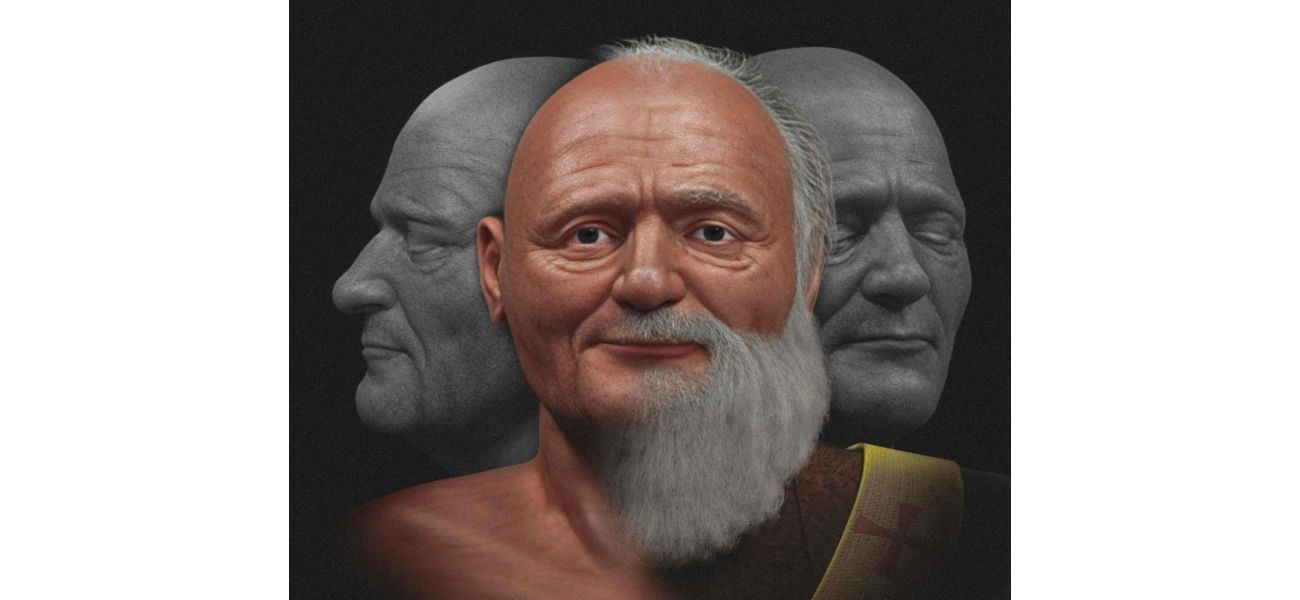Archaeologists seek to unearth the grave of the true Santa Claus.
Children have been attempting to get a glimpse of Santa Claus for ages, but researchers may have finally discovered his appearance.
December 9th 2024.

As we all know, Santa Claus is a beloved and often mysterious figure, with many questions surrounding his existence. One of these mysteries has been the whereabouts of his initial resting place in the ancient town of Myra, before his remains were transported to Italy. However, thanks to recent discoveries and research, we may finally have an answer to this pressing question.
Archaeologists have been excavating the church in Turkey where St. Nicholas, the Christian bishop who inspired the legend of modern-day Santa, is believed to have been buried. And to their surprise, they uncovered a limestone sarcophagus, potentially holding the remains of the beloved saint. This exciting find has shed some light on his history and has sparked further investigation into the matter.
But that's not all. In a double dose of St. Nick this week, researchers were able to recreate how he may have looked using measurements from a skull believed to belong to him. This skull, which has been passed down through generations, allowed facial reconstruction specialist Cicero Moraes to bring Santa's face to life. He used 3D modeling to create versions of the face, both with and without his iconic beard. And interestingly, one of the versions closely resembled the first ever depiction of Santa from 1863, with a wide face and an asymmetric nose.
To be fair, Santa's looks have always been a mystery, hidden behind that big white beard of his. But now, thanks to these new discoveries and reconstructions, we have a better understanding of his appearance and potentially even his physical build. We now know that St. Nicholas was a monk who was believed to have been born around 280 AD in Patara, Turkey. His generosity and charity were legendary, and he became an important figure in early Christianity, particularly as the patron saint of children.
Despite his importance and widespread fame, little is known for sure about his life and resting place. Some believe that his body was exhumed in 1087 and his bones, including his skull, were stolen and taken to Italy by sailors. This was done to protect the remains from invaders and to boost the religious profile of their city as a place for pilgrims. However, there are still some who believe that his full skeleton may still be buried at the church in Antalya.
In an effort to uncover more about St. Nick's history, Turkey's Ministry of Culture and Tourism commissioned excavations at the church in the Demre district, as part of the "Legacy for the Future Project." Associate Professor Ebru Fatma Findik from Hatay Mustafa Kemal University is leading this project, and she expressed her hopes of finding an inscription on the sarcophagus that could provide more information about the burial and its date.
Although only a small section of the burial chamber has been exposed, the team is hopeful that further excavation will reveal more details in the coming months. While it is too early to confirm if this is indeed the original resting place of St. Nicholas, this discovery is certainly a promising one and adds more pieces to the puzzle.
In the end, it is evident that there is still much to be discovered and learned about this beloved figure. But thanks to the hard work and dedication of archaeologists and researchers, we are slowly piecing together the story of St. Nicholas and his legacy that continues to live on through the tradition of Santa Claus.
Archaeologists have been excavating the church in Turkey where St. Nicholas, the Christian bishop who inspired the legend of modern-day Santa, is believed to have been buried. And to their surprise, they uncovered a limestone sarcophagus, potentially holding the remains of the beloved saint. This exciting find has shed some light on his history and has sparked further investigation into the matter.
But that's not all. In a double dose of St. Nick this week, researchers were able to recreate how he may have looked using measurements from a skull believed to belong to him. This skull, which has been passed down through generations, allowed facial reconstruction specialist Cicero Moraes to bring Santa's face to life. He used 3D modeling to create versions of the face, both with and without his iconic beard. And interestingly, one of the versions closely resembled the first ever depiction of Santa from 1863, with a wide face and an asymmetric nose.
To be fair, Santa's looks have always been a mystery, hidden behind that big white beard of his. But now, thanks to these new discoveries and reconstructions, we have a better understanding of his appearance and potentially even his physical build. We now know that St. Nicholas was a monk who was believed to have been born around 280 AD in Patara, Turkey. His generosity and charity were legendary, and he became an important figure in early Christianity, particularly as the patron saint of children.
Despite his importance and widespread fame, little is known for sure about his life and resting place. Some believe that his body was exhumed in 1087 and his bones, including his skull, were stolen and taken to Italy by sailors. This was done to protect the remains from invaders and to boost the religious profile of their city as a place for pilgrims. However, there are still some who believe that his full skeleton may still be buried at the church in Antalya.
In an effort to uncover more about St. Nick's history, Turkey's Ministry of Culture and Tourism commissioned excavations at the church in the Demre district, as part of the "Legacy for the Future Project." Associate Professor Ebru Fatma Findik from Hatay Mustafa Kemal University is leading this project, and she expressed her hopes of finding an inscription on the sarcophagus that could provide more information about the burial and its date.
Although only a small section of the burial chamber has been exposed, the team is hopeful that further excavation will reveal more details in the coming months. While it is too early to confirm if this is indeed the original resting place of St. Nicholas, this discovery is certainly a promising one and adds more pieces to the puzzle.
In the end, it is evident that there is still much to be discovered and learned about this beloved figure. But thanks to the hard work and dedication of archaeologists and researchers, we are slowly piecing together the story of St. Nicholas and his legacy that continues to live on through the tradition of Santa Claus.
[This article has been trending online recently and has been generated with AI. Your feed is customized.]
[Generative AI is experimental.]
0
0
Submit Comment





